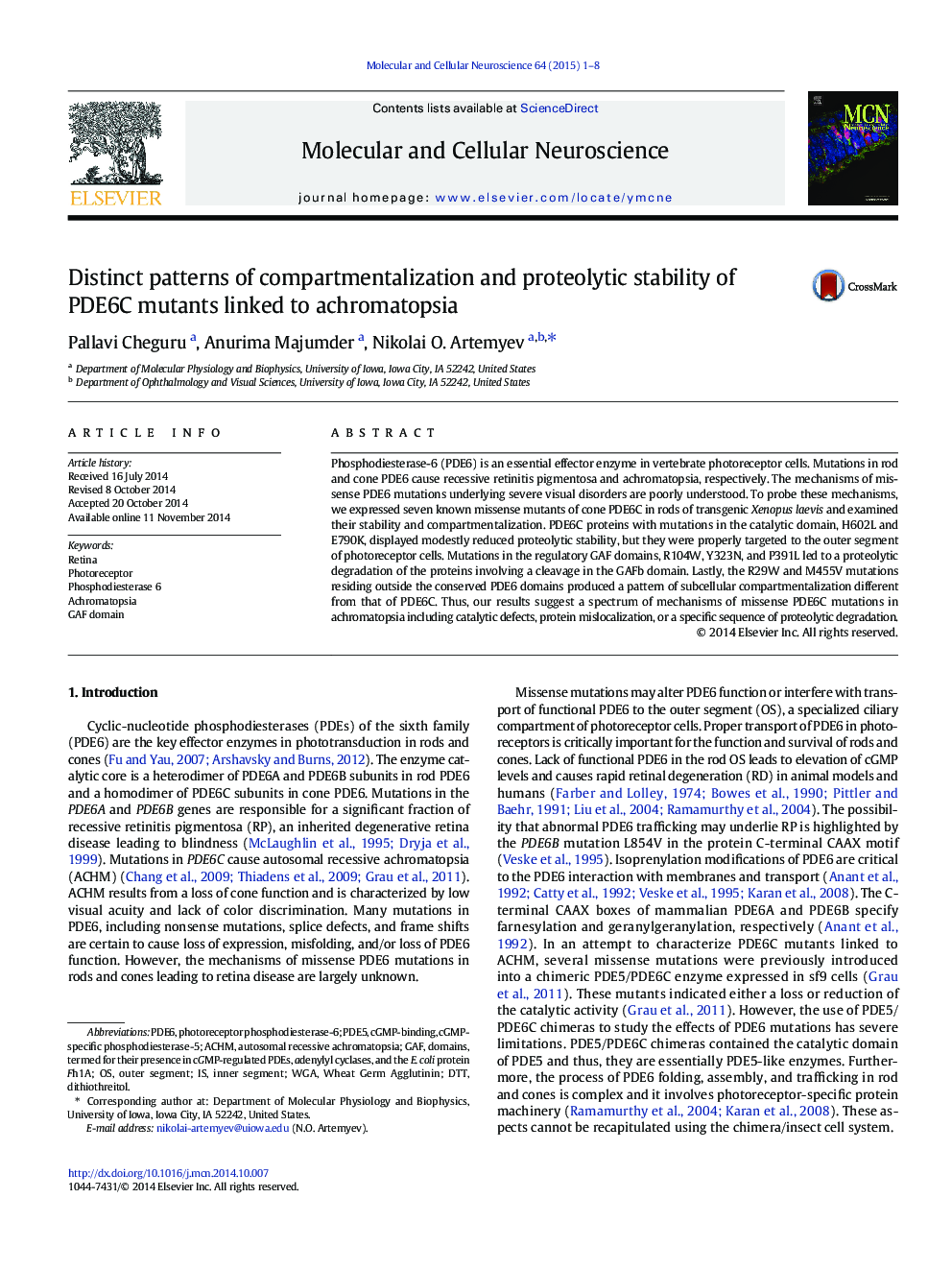| Article ID | Journal | Published Year | Pages | File Type |
|---|---|---|---|---|
| 8478585 | Molecular and Cellular Neuroscience | 2015 | 8 Pages |
Abstract
Phosphodiesterase-6 (PDE6) is an essential effector enzyme in vertebrate photoreceptor cells. Mutations in rod and cone PDE6 cause recessive retinitis pigmentosa and achromatopsia, respectively. The mechanisms of missense PDE6 mutations underlying severe visual disorders are poorly understood. To probe these mechanisms, we expressed seven known missense mutants of cone PDE6C in rods of transgenic Xenopus laevis and examined their stability and compartmentalization. PDE6C proteins with mutations in the catalytic domain, H602L and E790K, displayed modestly reduced proteolytic stability, but they were properly targeted to the outer segment of photoreceptor cells. Mutations in the regulatory GAF domains, R104W, Y323N, and P391L led to a proteolytic degradation of the proteins involving a cleavage in the GAFb domain. Lastly, the R29W and M455V mutations residing outside the conserved PDE6 domains produced a pattern of subcellular compartmentalization different from that of PDE6C. Thus, our results suggest a spectrum of mechanisms of missense PDE6C mutations in achromatopsia including catalytic defects, protein mislocalization, or a specific sequence of proteolytic degradation.
Keywords
Related Topics
Life Sciences
Biochemistry, Genetics and Molecular Biology
Cell Biology
Authors
Pallavi Cheguru, Anurima Majumder, Nikolai O. Artemyev,
